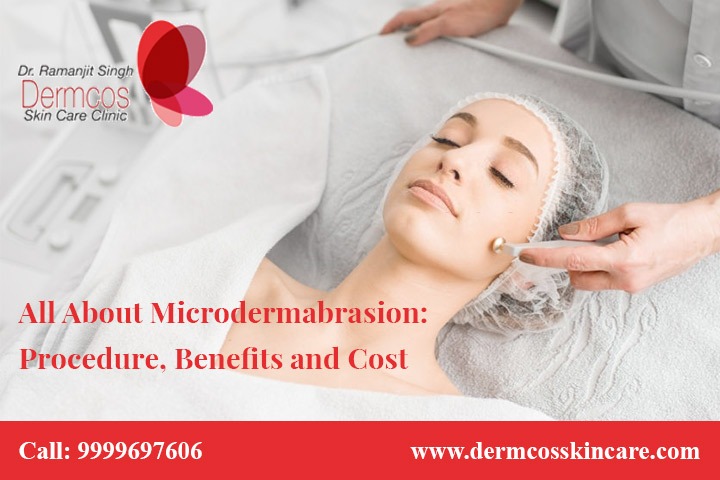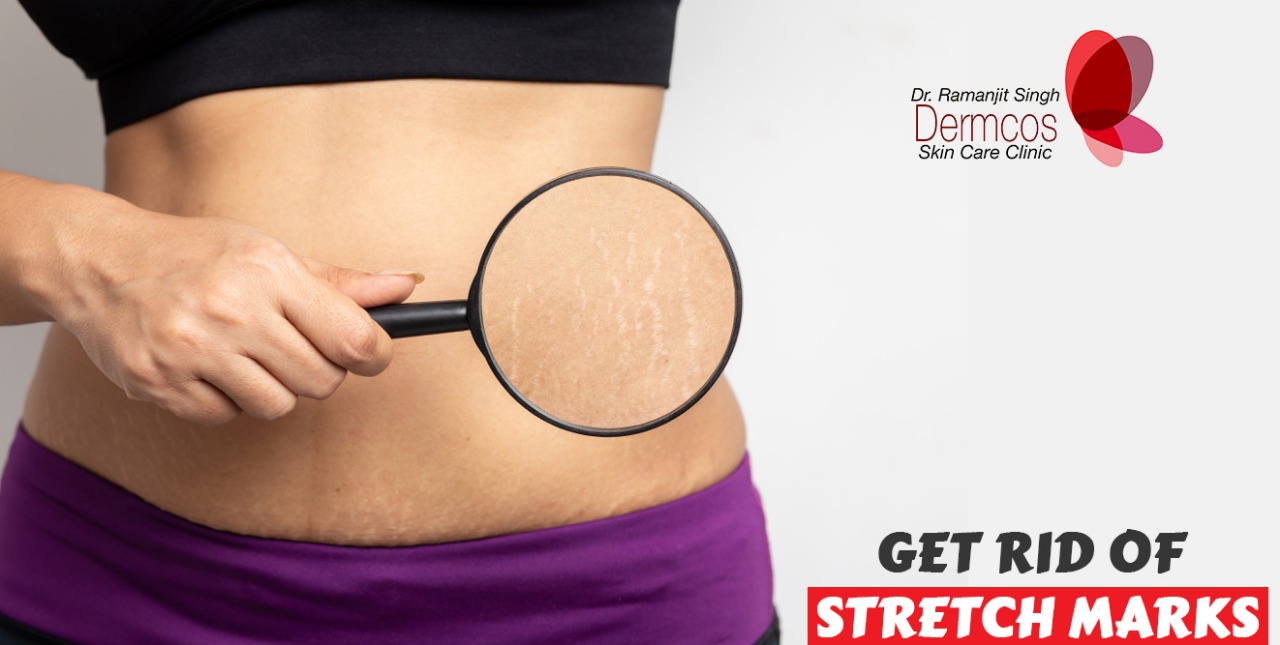Microdermabrasion became a trend in the 1990s and is still popular among individuals. And not without reason! This procedure offers several skin benefits at a reasonable price and minimal to no side effects. If you are considering getting this treatment, you should know what it involves and what to expect before and after the procedure. Here is a detailed description of everything you need to know about microdermabrasion.
What is Microdermabrasion?
Microdermabrasion is a minimally-invasive, in-office cosmetic procedure. It is based on the principle of exfoliation through gentle abrasion, which removes the dust, oil, and dead skin cells and reveals the inner healthy layer of the skin. This method helps in dealing with several skin concerns. Dermatologists often prescribe microdermabrasion for acne scars, acne, wrinkles, and hyperpigmentation.
Who Can Get a Microdermabrasion Treatment?
Microdermabrasion is known to be safe for all skin types, colors, and textures. However, consult your dermatologist before undergoing this treatment if you have sensitive skin, are pregnant, or have experienced an allergic reaction after cosmetic procedures earlier. People that have any active rashes on the skin are also advised to wait until their skin has recovered. Also, if you have taken isotretinoin, an acne medication, within a month, the doctor would ask you to avoid this procedure as it can increase the chances of having a side effect.
You can undergo microdermabrasion treatment without any specific reason or before a special occasion. However, this process also targets and helps to deal with some skin conditions like:
- Hyperpigmentation
- Pox marks
- Acne and acne scarring
- Sun damage
- Uneven skin tone and texture
- Fine lines and wrinkles
- Signs of skin aging
- Stretch marks
- Melasma
- Dull-looking skin
These are only a few of the skin concerns addressed by microdermabrasion. But it is also worth noting that this procedure has its limitations. Microdermabrasion for acne scars or pox marks is not very effective. If you are undergoing microdermabrasion for stretch marks or wrinkles, note that if the marks are too old and deep, they would not completely go after the treatment. Also, congenital skin issues like milia and cleft, burn scars, and this procedure cannot treat pigmented birthmarks.
Benefits of Microdermabrasion
As mentioned earlier, microdermabrasion targets several skin concerns. Hence, it offers several skin benefits. Some of them include:
- It cleans off the topmost dead layer of the skin and reveals a healthy layer that looks more lively.
- It gives smoother and glowing skin.
- It reduces and treats hyperpigmentation.
- It provides an even skin tone and texture.
- It reduces the signs of skin aging.
- It helps the skin recover from sun damage.
- It treats skin conditions like acne, melasma, etc.
- It is a low-cost procedure with minimal to no side effects.
- It does not require downtime for recovery.
Please note that you may not notice the desired result immediately in some cases. Serious or old skin issues can take multiple microdermabrasion treatments to get the desired outcome. Consult your dermatologist about the whole process and the results you want. Depending on your skin type and issue, they may advise you to get 5 to 15 weekly or monthly treatments.
Procedure and Cost of Microdermabrasion Treatment
A microdermabrasion treatment is performed either by plastic surgeons or licensed professionals. You can visit a dermatologist or a medical spa to get microdermabrasion for stretch marks, wrinkles, or your other skin concerns. The cost of microdermabrasion treatment can vary in different clinics and for different professionals. But generally, the price ranges between 2000-5000 INR. On doing a cost-benefit analysis, you would agree that the price is reasonable for the wide range of benefits this process offers.
It is an in-office procedure that takes about 1-2 hours to work on the face and neck area. The doctor or the attendant would make you sit on a reclining chair and ask you to relax. Since the process is not painful, there is no need for local anesthesia or any numbing agent. Microdermabrasion can be done in 3 different ways that are listed below:
1. Using a Diamond-tip Handpiece
This method uses a handheld wand-like device with a diamond tip. This tip is textured and rough enough to abrase the skin without irritating it. The doctors run this tip in a circular motion on the face and neck to gently exfoliate the skin. This helps to rub off the dead skin cells and dirt from the outer layer of the skin. At the same time, this debris is suctioned away, leaving the skin clean and fresh.
The depth of abrasion is determined by how much pressure is being applied to the skin by the diamond-tip and for how long, and it can be controlled by the doctors. This procedure is usually opted when focusing on sensitive areas of skin like the eye region.
2. Crystal Microdermabrasion
As the name suggests, this method uses tiny crystals for exfoliation. Usually, sodium bicarbonate or aluminum oxide crystals are employed. Here, a handheld device with a spray-like tip is used that sprays micro-crystals onto the skin surface. The pressure and abrasion due to the crystals rub off the dead skin cells, dirt, and oil from the skin surface which is immediately suctioned away.
This method is a bit harsher to the skin than the diamond-tip procedure. Although it is usually not an issue, tell your dermatologist about it before undergoing this process if you have highly sensitive skin. This is the best approach to microdermabrasion for stretch marks treatment, according to dermatologists.
3. Hydradermabrasion
This process is the newest and most gentle among all microdermabrasion procedures. It involves exfoliation while simultaneously infusing different products. Here, the exfoliants are tiny crystal-free particles that remove dead skin cells and rejuvenate the skin. It also stimulates collagen production and maximizes the blood flow to and from the skin cells.
Dermatologists prescribe this approach to microdermabrasion for acne scars or active acne treatment.
All these 3 methods of microdermabrasion are equally effective. However, it is worth noting that these effects are only temporary. After the treatment, your skin will encounter dust, pollutants, and sun damage, and, over time, it could lead to similar issues that you were facing before. Hence, you must have a skincare routine tailored specifically for your skin type and concerns. This would help you have fresh, radiant, and young-looking skin in the long run.
Side-effects of Microdermabrasion
Side effects of microdermabrasion are rarely serious. Since it requires no downtime for recovery, even if you experience minimal side effects, it will go away within a few hours or a day after the treatment. Some of the side-effects include:
- Redness
- Swelling
- Tenderness
- Minor bruising caused by the suction
- Temporary or permanent pigmentation
We advise you to consult your dermatologist before getting this treatment to avoid these side effects. Also, your skin would be sensitive for a few weeks after the procedure. During this period, a lack of proper skin care
can cause complications. So stay hydrated, apply moisturizer and sunscreen regularly, and use gentle products instead of chemical ones.
Our Advice
Now you know how microdermabrasion works, what it involves, and the possible side effects. While this procedure is safe for everyone, we suggest you consult a dermatologist before undergoing the treatment. This ensures that you get the best treatment according to your skin issues. It also reduces your chances of having any side effects. If you are facing any skin-related issues, microdermabrasion might be the right solution for you.



